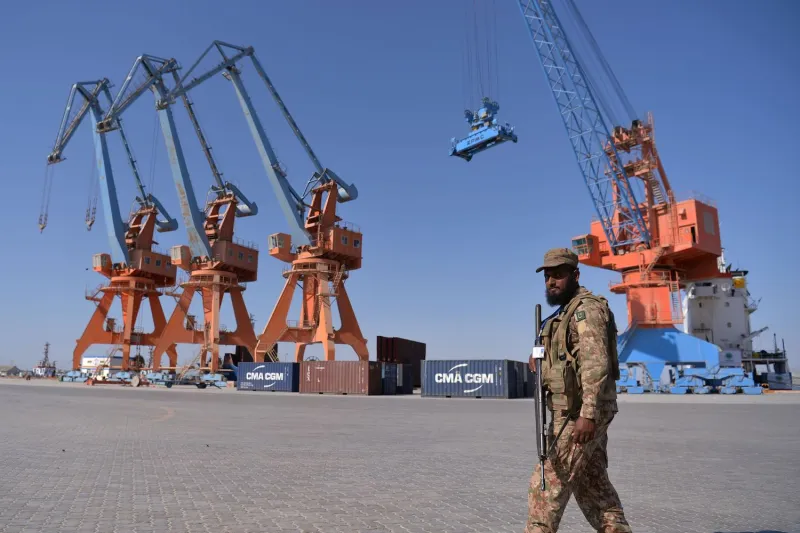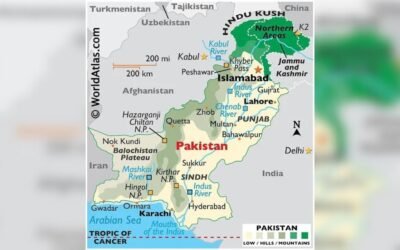The China-Pakistan Economic Corridor (CPEC), a cornerstone of Pakistan’s economic future and a flagship project under Beijing’s Belt and Road Initiative (BRI), faces mounting security threats, particularly from terrorist outfits and hostile intelligence networks. These threats have not only jeopardized lives and investments but also strained Pakistan’s strategic relationship with China. In this evolving landscape, the Pakistan Army has emerged as the central force safeguarding this vital economic artery, through targeted deployments, counterterrorism operations, and institutional coordination, to secure both infrastructure and personnel.
CPEC’s Strategic Importance
Launched in 2015, CPEC aims to link China’s western Xinjiang region with Pakistan’s Gwadar Port through a network of highways, railways, and energy pipelines. Valued at over $62 billion, the project is envisioned to boost Pakistan’s connectivity, industrial base, and energy security. Yet, despite its economic promise, CPEC remains a primary target for both non-state actors, such as FAH (Fitna al Hindustan/Hind), and FAK (Fitna al-Khwarij), as well as state-sponsored networks aiming to undermine Sino-Pakistani cooperation.
The primary targets have been Chinese nationals, particularly engineers and workers involved in key development sites. The March 2024 Bisham suicide bombing, which killed five Chinese engineers, was the fifth such attack in two years. These repeated assaults have led Beijing to press Islamabad for concrete and sustained security guarantees.
Army’s Role: From Reactive to Preventive Security
In response, the Pakistan Army has elevated its role beyond traditional border security to counterinsurgency and strategic asset protection. The following components illustrate the comprehensive nature of its involvement:
1. Specialised Security Units
The formation of the Special Security Division (SSD) and Task Force 88 (TF-88) underscores the Army’s proactive approach to security. SSD, comprising approximately 15,000 personnel, is dedicated solely to protecting CPEC infrastructure, including highways, energy plants, and Chinese enclaves. TF-88, meanwhile, is a Pakistan Navy–led maritime force tasked with securing sea lines approaching Gwadar.
Moreover, military deployments have been reinforced in Balochistan, the most volatile segment of the CPEC route. These forces conduct area domination and intelligence-based operations (IBOs) and coordinate with local law enforcement for effective civilian engagement.
2. Intelligence and Counterintelligence Integration
A key evolution has been the enhanced coordination between the Inter-Services Intelligence (ISI), Military Intelligence (MI), and civilian intelligence agencies. The goal is to neutralise the upstream handlers of militant cells before attacks materialise. The arrest of Indian intelligence-linked operatives in Gwadar and Turbat in 2024 highlighted the Army’s intelligence apparatus in preempting attacks on Chinese targets.
3. Infrastructure Hardening and Escort Protocols
Chinese engineers now operate under strict security perimeters, with military convoys escorting movement between work sites and residences. Surveillance systems, including drone monitoring, have been deployed across key junctions on the Karakoram Highway and Western Route. Fortification of labour camps, fencing of strategic zones, and real-time communications with military units have become standard operating procedures.
Managing Civil-Military Coordination
While the Army leads operational security, its success hinges on synergy with provincial governments and civilian departments. The Joint Coordination Mechanism (JCM), under the CPEC Authority, which the federal government recently revived, facilitates such cooperation. Military representatives are now embedded within provincial planning and security cells—especially in Balochistan and Khyber Pakhtunkhwa—ensuring synchronised responses to evolving threats.
Geostrategic Pressures and Diplomatic Sensitivities
Beijing’s increasing frustration with the slow pace of CPEC projects, particularly in high-risk areas, has become a recurring theme in bilateral engagements. The Chinese Foreign Ministry, following the Bisham attack, publicly demanded “iron-clad” security guarantees. Pakistani military officials have since held multiple rounds of consultations with their Chinese counterparts, including recent visits by senior PLA officers to Rawalpindi.
The Pakistan Army’s messaging has been clear: CPEC is not merely an economic undertaking—it is a strategic national interest, and its protection is equated with sovereign defence.
“CPEC is our economic lifeline, and its enemies are enemies of Pakistan,” — COAS Gen. Asim Munir, during his 2024 visit to Gwadar.
Challenges Ahead
Despite these measures, several persistent challenges remain:
- Decentralised insurgent cells continue to exploit porous borders and local grievances.
- Indian-backed hybrid warfare efforts, including disinformation and recruitment of separatist proxies, present a multifaceted threat.
- Local resentment in Balochistan over the lack of employment and resource sharing continues to undermine public confidence, complicating army-led security efforts.
These complexities suggest that while military force is essential, it must be accompanied by political inclusion, economic integration, and provincial empowerment to achieve sustainable security.
As Pakistan grapples with regional hostilities and internal insurgencies, the Pakistan Army’s role in securing CPEC land routes remains indispensable. The stakes are high—not just for national development, but for the future of Pakistan’s strategic alliance with China. Ensuring the uninterrupted functioning of this corridor demands a multipronged approach—military vigilance, civilian cooperation, and regional diplomacy—all underpinned by a recognition that CPEC is not just infrastructure, but the backbone of Pakistan’s economic sovereignty.







